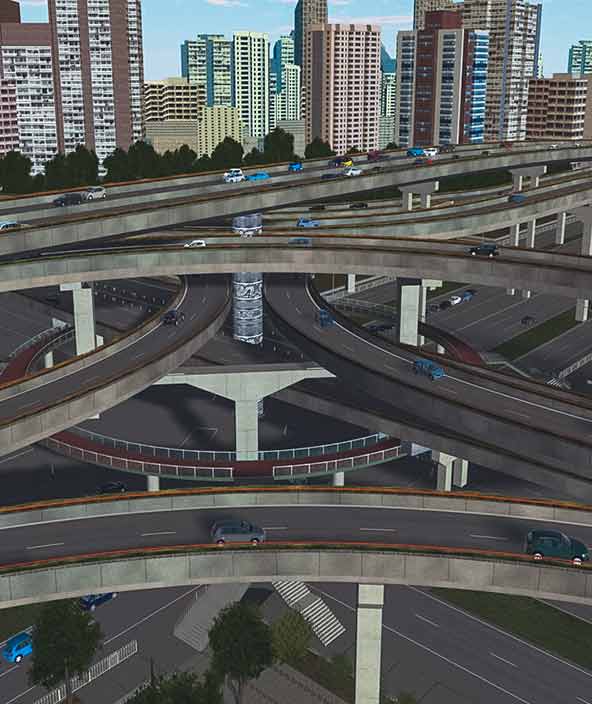Virtual Test Drive
Run virtual test drives for thousands of scenarios to ensure autonomous vehicle safety.

eBook: Virtual Test Drive 2020
Discover how simulation helps ensure safer ADAS and autonomous vehicle design.
For safe autonomous mobility to become the standard on our roads, simulation and testing is essential. Hexagon’s virtual test drive solutions enable the simulation of thousands of scenarios to accelerate the development of the new generation of fully autonomous vehicles (AVs).
Overview
For autonomous mobility to become mainstream, consumers must have absolute confidence in the technology. Vehicle performance in operating environments must be predictable, requiring many millions of miles of road testing in all conditions to provide a rich data set for development.
Simulation technology offers a virtual solution to the required vehicle testing for autonomous mobility. With virtual test drive solutions, autonomous vehicles can be accurately road tested in multiple scenarios so that meaningful engineering information is available to inform autonomous vehicle development.
Hexagon’s virtual test drive solutions create, configure and visualise complete environments for vehicles to be evaluated and validated in any conceivable condition of operation. They enable autonomous vehicle developers to validate scenarios through various test platforms:
- Model in the loop (MiL)
- Software in the loop (SiL)
- Hardware in the loop (HiL)
- Driver in the loop (DiL)
- Vehicle in the loop (ViL)





